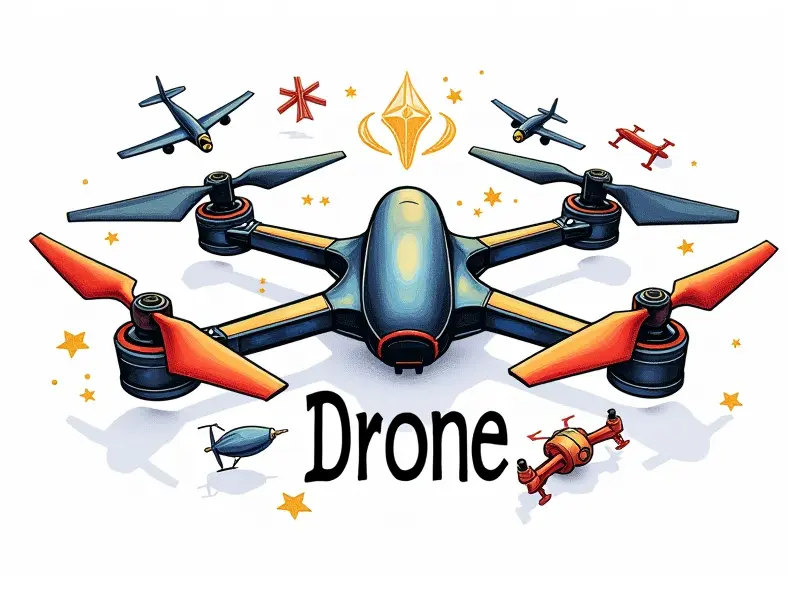How to replace damaged motors?

How to Replace Damaged Motors: A Comprehensive Guide
Replacing damaged motors in remote control (RC) vehicles is a crucial skill that every hobbyist should master. Whether you're dealing with quadcopters, FPV racing drones, or RC planes and helicopters, knowing how to swap out faulty motors can save you time and money while keeping your equipment operational.
Replace RC Drone Motors Easily
When it comes to replacing damaged motors on an RC drone, precision is key. Here’s a step-by-step guide:
- Identify the Faulty Motor: Check for unusual vibrations or decreased performance.
- Prepare Your Tools: Gather screwdrivers, wire cutters, and replacement motors.
- Disconnect Power: Ensure all power is off before starting any work.
- Remove Old Motor: Unscrew the motor from its mounting plate carefully.
- Install New Motor: Align and secure the new motor in place with screws.
- Reconnect Wiring: Ensure all connections are tight and properly insulated.
Fixing Damaged Quadcopter Motors
Quadcopters rely on four identical motors for stability. If one motor fails, the entire system can be compromised:
- Inspect Motor Mounts: Ensure all mounting points are secure and undamaged.
- Check Propellers: Inspect propeller blades for cracks or damage.
- Test Each Motor Individually: Use a multimeter to test motor resistance.
- Replace Faulty Components: Swap out damaged parts with identical replacements.
FPV Racing Drone Motor Swap
For FPV racing drones, quick and efficient motor replacement is essential for maintaining peak performance:
- Carry Spare Motors: Always have a set of spare motors in your toolkit.
- Use Quick Release Mounts: Optimize mounting systems to facilitate fast swaps.
- Practice Motor Installation: Familiarize yourself with the process before an emergency occurs.
DIY Motor Replacement for Drones
If you prefer a hands-on approach, DIY motor replacement can be both cost-effective and rewarding:
- Source Quality Components: Purchase motors from reputable manufacturers.
- Disassemble Carefully: Take apart your drone methodically to avoid damaging other components.
- Document Your Process: Keep track of each step for future reference or troubleshooting.
Step-by-Step Motor Change Tutorial
This detailed tutorial covers every aspect of motor replacement, from preparation to final testing:
- Gather Necessary Tools: Screwdrivers, wire cutters, multimeter, and spare motors.
- Power Off the Drone: Disconnect all power sources before beginning work.
- Remove Old Motor: Unscrew mounting screws and disconnect wires carefully.
- Install New Motor: Align new motor with mounting plate and secure it properly.
- Test the Replacement: Power up your drone and check for proper function.
Repairing Airplane Propulsion Systems
Airplanes require meticulous care when replacing motors due to their specific aerodynamic requirements:
- Select Compatible Motors: Ensure the new motor matches your aircraft’s specifications.
- Remove Old Motor Assembly: Carefully disassemble and remove the faulty propulsion unit.
- Install New Propulsion Unit: Reattach all components securely to maintain flight stability.
Quick Guide: Replacing Damaged Drone Motors
A concise guide for those who need a fast solution:
- Identify the Issue: Determine if motor failure is causing performance issues.
- Gather Replacement Parts: Have spare motors and tools ready at hand.
- Follow Safety Protocols: Disconnect power and follow safe working procedures.
How to Easily Replace RC Plane Motors
Replacing motors in an RC plane can be straightforward with the right approach:
- Choose Appropriate Replacement: Select a motor that matches your aircraft's specifications.
- Dismantle Carefully: Remove old motor by unscrewing mounting points and disconnecting wiring.
- Install New Motor: Align new motor with the frame and secure it tightly.
Fast Fixes: Swapping Out Helicopter Motors
Helicopters often require quick repairs due to their complex mechanics. Here’s how to do it efficiently:
- Carry Spares: Always have spare motors and tools available.
- Identify the Problem: Quickly assess which motor is causing issues.
- Swap Out Faulty Motor: Replace with a new one, ensuring proper alignment.
Master Motor Maintenance in Minutes
Maintaining your motors regularly can prevent major failures and extend their lifespan. Here’s how:
- Clean Motors Regularly: Remove dust and debris to keep components functional.
- Lubricate Moving Parts: Apply appropriate lubricants to ensure smooth operation.
- Inspect for Wear: Check motors periodically for signs of wear or damage.
Revive Your RC Vehicle with New Motors
Upgrading or replacing your RC vehicle’s motors can breathe new life into your hobby. Follow these steps to ensure a successful upgrade:
- Select High-Quality Components: Invest in reliable and durable motors.
- Familiarize Yourself with Installation: Study the process thoroughly before starting.
- Pilot Your Vehicle: Test new motors to ensure optimal performance and safety.
In conclusion, mastering motor replacement for RC vehicles is a vital skill that can enhance your enjoyment and prolong the life of your equipment. By following these detailed guides and tips, you’ll be able to tackle any motor-related issues with confidence and efficiency.

